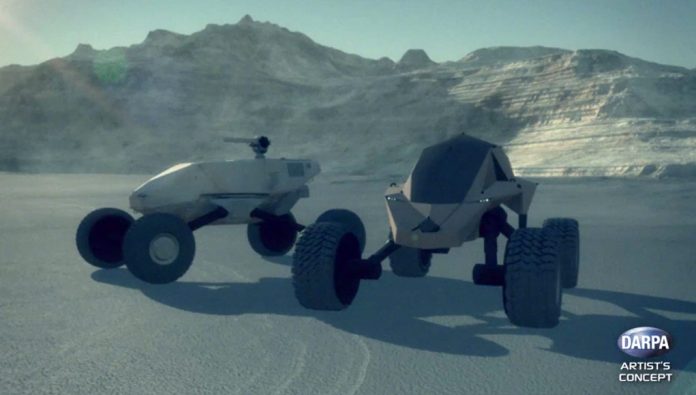
The US Defense Advanced Research Projects Agency (DARPA) has awarded technology research contracts to eight companies under the agency’s Ground X-Vehicle Technology (GXV-T) program, seeking to deliver crew/vehicle survivability through means other than traditional heavy passive armor solutions. DARPA expects these capabilities will be applicable to future ground combat vehicles, improving their combat efficiency and reduce cost.
“We’re exploring a variety of potentially groundbreaking technologies, all of which are designed to improve vehicle mobility, vehicle survivability and crew safety and performance without piling on armor,” said Maj. Christopher Orlowski, DARPA GXV-T program manager.
“DARPA’s performers for GXV-T are helping defy the ‘more armor equals better protection’ axiom that has constrained armored ground vehicle design for the past 100 years, and are paving the way toward innovative, disruptive vehicles for the 21st Century and beyond.” Orlowski added.
The organizations awarded contracts under the GXV-T include:
- Carnegie Mellon University (Pittsburgh, Pa.)
- Honeywell International Inc. (Phoenix, Ariz.)
- Leidos (San Diego, Calif.)
- Pratt & Miller (New Hudson, Mich.)
- QinetiQ Inc. (QinetiQ UK, Farnborough, United Kingdom)
- Raytheon BBN (Cambridge, Mass.)
- Southwest Research Institute (San Antonio, Tex.)
- SRI International (Menlo Park, Calif.)

The programme’s technical goals aim to reduce the typical vehicle size and weight by 50 percent, double the speed, and halve the number of crew members needed to operate such combat vehicles.
GXV-T is pursuing research in the following four technical areas:
- Radically Enhanced Mobility—Ability to traverse diverse off-road terrain, including slopes and various elevations. Capabilities of interest include revolutionary wheel/track and suspension technologies that would enable greater terrain access and faster travel both on- and off-road compared to existing ground vehicles.
- Survivability through Agility—Autonomously avoid incoming threats without harming occupants through technologies that enable, for example, agile motion and active repositioning of armor. Capabilities of interest include vertical and horizontal movement of armor to defeat incoming threats in real time.
- Crew Augmentation—Improved physical and electronically assisted situational awareness for crew and passengers; semi-autonomous driver assistance and automation of key crew functions similar to capabilities found in modern commercial airplane cockpits. Capabilities of interest include high-resolution, 360-degree visualization of data from multiple onboard sensors and technologies to support closed-cockpit vehicle operations.
- Signature Management—Reduction of detectable signatures, including visible, infrared (IR), acoustic and electromagnetic (EM). Capabilities of interest include improved ways to avoid detection and engagement by adversaries.
These innovative technologies would be developed in 24 months with the intent to incorporate them into multiple classes of ground, tactical and support vehicles, following the successful completion of the program. The U.S. Army and U.S. Marine Corps have expressed interest in future GXV-T capabilities.
DARPA has also launched a parallel program to enhance the infantry squad. The Squad X Experimentation (Squad X) program seeks to design, develop and validate system prototypes for combined-arms squads. The program combines off-the-shelf technologies and new capabilities under development through DARPA’s Squad X Core Technologies (SXCT) program, which was launched specifically to develop novel technologies that Squad X could integrate into user-friendly systems. Specifically, these technologies include precision engagement, non-kinetic engagement, squad sensing and squad autonomy. SXCT recently awarded Phase 1 contracts to nine organizations.



















